Now it goes without saying that the shaft is an important component of your golf clubs, and there are a few factors that come into fitting a shaft to you. The more immediately noticeable variables are shaft flex and weight, because it’s writing there on the shaft, but one of the most important underlying variables is the bend profile, or EI curve. So, what does that mean and how does it affect us?
 The shaft’s bend profile essentially details where the shaft is softest and stiffest, so even two shafts in the same flex and weight can differ noticeably due to where the shaft flexes through the swing. The EI curve graph (pictured here) is how the bend profile of a shaft is represented, with the right side telling us how stiff the butt is and the left representing the tip section. When the line is higher in the graph the shat is stiffer, and the lower it goes the softer it is. As we can see here, 4 shafts within the same line of iron shafts (Modus) can actually differ significantly. For example, the heaviest offering, Modus 130 (represented by the blue line), actually has one of the softest tip sections in the line, with a stiffer butt and mid-section. This would generally make it feel easier to launch due to the softness further down the shaft, but you’d feel a lot of stability due to the stiffness in your hands. In theory this would suit someone with a quick tempo and a lot of speed who still wants to feel like they can easily launch and spin the ball. In comparison the Modus 120 (the red line) has a softer butt and stiffer tip for a smoother feel but more control if you like to keep the ball lower.
The shaft’s bend profile essentially details where the shaft is softest and stiffest, so even two shafts in the same flex and weight can differ noticeably due to where the shaft flexes through the swing. The EI curve graph (pictured here) is how the bend profile of a shaft is represented, with the right side telling us how stiff the butt is and the left representing the tip section. When the line is higher in the graph the shat is stiffer, and the lower it goes the softer it is. As we can see here, 4 shafts within the same line of iron shafts (Modus) can actually differ significantly. For example, the heaviest offering, Modus 130 (represented by the blue line), actually has one of the softest tip sections in the line, with a stiffer butt and mid-section. This would generally make it feel easier to launch due to the softness further down the shaft, but you’d feel a lot of stability due to the stiffness in your hands. In theory this would suit someone with a quick tempo and a lot of speed who still wants to feel like they can easily launch and spin the ball. In comparison the Modus 120 (the red line) has a softer butt and stiffer tip for a smoother feel but more control if you like to keep the ball lower.
So, what does this actually do? Why does it matter that the butt is stiff and the tip is soft? Well, the ranges are designed to cater to different players. Different flexes in the butt sections usually come down to the tempo conversation, a quicker player with a more aggressive transition may not want to feel much give in their hands so the club still feels in control, so will often suit a shaft with a stiffer butt, meanwhile the tip softness will more likely affect the way the shaft kicks and presents loft. So while a softer tip section will tend to help launching and spinning the ball, a stiffer one will help feel that you can keep the ball down. So depending on what your ball flight is and what you want to feel there are multiple variations to suit your style.
Now it would be an exaggeration to claim that the bend profile is the only thing that changes your ball flight as the difference in how shafts move will be small in the grand scheme of things. However the feel of a shaft is vitally important to get right as the reaction
of the golfer and how you swing it will have a much more noticeable effect on your ball flight. These subtle feels will change how you release your hands, how you transition and generally how comfortable you feel swinging the club. SO when you get fitted, keep in mind how and just as importantly where the shaft bends to get your optimum fit!
Jim Mitchell
Custom Fitting Specialist



